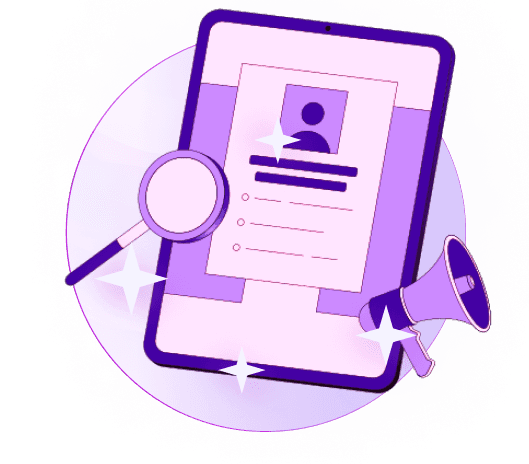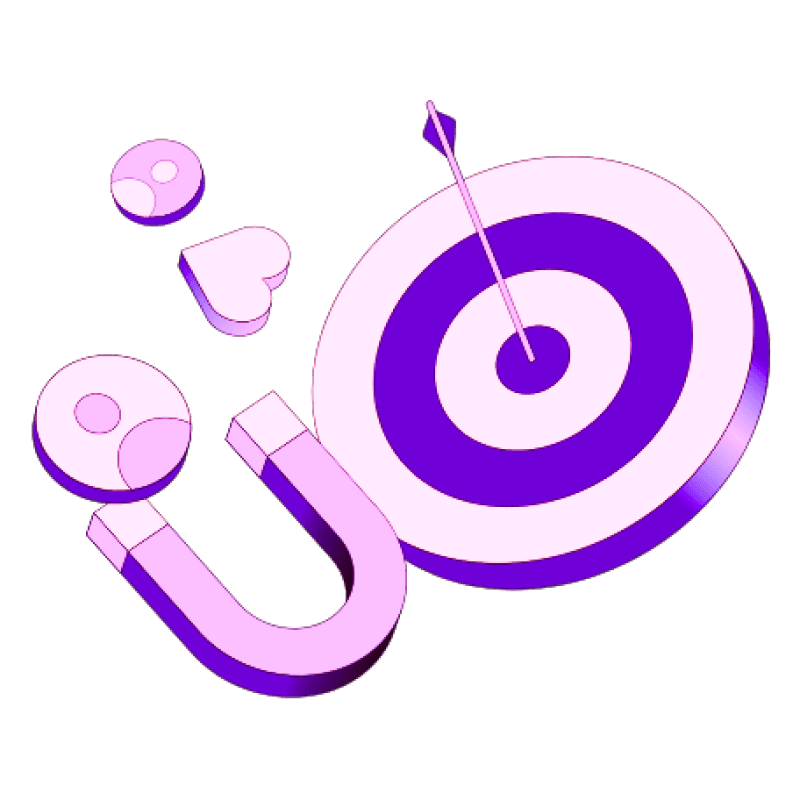Blogs
Articles

Waterfall Enrichment vs Batch Enrichment: Key Differences Explained
B2B professionals often struggle to choose between waterfall enrichment and batch enrichment - a decision that affects their lead quality and sales performance. Traditional batch enrichment uses a single data provider to boost lead information through a static process.
Waterfall enrichment takes a different path. This step-by-step approach combines multiple data sources to verify and improve prospect information, which ended up creating more comprehensive and precise B2B datasets. The impact extends beyond just the process differences. Your team's access speed to enriched data, lead profile quality, and conversion rates depend heavily on your chosen methodology.
This piece breaks down what lead enrichment means for your business and examines the core differences between these approaches. We'll help you pick the option that lines up with your sales targets and budget requirements, whether you want to upgrade your current data enrichment strategy or better understand these methodologies.
What is waterfall enrichment?
Waterfall enrichment works like a step-by-step data improvement process that flows through multiple data sources to verify and complete prospect information. The name "waterfall" fits perfectly because data flows down from one source to another, like water falling down steps, until it reaches the best possible completeness and reliability.
The process starts with simple prospect data—usually names, company names, and domains—and runs this information through different data vendors systematically. Your primary data provider kicks things off. When this source can't fill all data gaps, the system moves to a secondary provider. This pattern continues until the data becomes complete or all sources have been used.
Let's say you have a prospect's name and company. You might check their email through one provider first. If that email isn't valid, the system looks at another source. The sequence goes on until it finds the right contact details. This step-by-step method builds on verified data and improves accuracy without doing the same work twice.
Waterfall enrichment isn't new, but many businesses thought it was too complex and expensive. Modern automation and integration tools have made it much easier to use.
Here's how it usually works:
Create your ideal prospect list with simple details
Pass this information to your first data vendor
Verify the returned contact information
If valid, stop the process
If invalid, move to the second data vendor
Repeat until you get valid information
What is batch enrichment?
Batch enrichment is a classic way to process data. The system collects information over time and processes it all at once to analyze the complete dataset. This method groups data for a specific timeframe and applies preset rules to get useful insights from raw information.
Batch enrichment runs as a scheduled job or one-time process, unlike step-by-step processing. Companies often use this method for one-off tasks. They upload a CSV of emails or domains, pay once, and download the enriched results. The system processes every record in the dataset at the same time instead of going through different data sources one by one.
Here's how batch enrichment works:
Prepare and upload your data list (containing person, company, or IP information)
Map your existing fields to the enrichment system's inputs
Configure any optional parameters for the enrichment job
Preview the job and initiate the enrichment process
Review results and select additional field add-ons if needed
Batch enrichment has been around for a while, but it does have some drawbacks:
You have to wait for the entire batch to process before getting insights
You can't access data in real-time, which might cost you opportunities
Large volumes of data can be tough to handle
It's slower than other enrichment methods
Comparing Waterfall vs Batch Enrichment Methods
The way businesses handle data quality and lead generation depends on whether they use waterfall or batch enrichment methods. Let's get into the main differences that affect your sales performance.
Data waterfall logic: Sequential vs static enrichment
Waterfall enrichment uses a progressive approach that flows through multiple data sources one after another. The system first checks a primary data provider and moves to other sources only when needed to complete profiles. Batch enrichment takes a different path. It applies the same static logic to all records at once, whatever the individual data gaps or specific needs might be. This is similar to the difference between personalized care and mass processing.
Real-time enrichment vs batch updates
Speed is a vital factor that sets these methods apart. Real-time enrichment updates prospect details right when you connect with leads. It pulls fresh data from live sources just before you reach out. Batch processing works differently. It gathers changes at set times—usually during quiet hours. This makes it slower but cheaper for handling huge data volumes. Real-time waterfall enrichment gives you a big advantage when every minute counts in your sales cycle.
Data enrichment records: Accuracy and freshness
The numbers tell us an interesting story about how well these methods work. Single-provider enrichment typically hits only 50-60% match rates. Waterfall enrichment pushes this up to 80-90%. B2B contact data goes stale at a rate of 30% each year. This makes waterfall's multi-source verification even more valuable. The layered approach catches outdated details that static batch processes might miss.
Sales lead enrichment: Which method delivers better ROI?
The numbers speak for themselves when we look at conversion rates. Companies with well-enriched CRM data create 44% more Sales Qualified Leads. They can boost revenue by over 45% without touching their products or prices. Waterfall enrichment follows a smart pay-for-success model—you only pay when you get valid information. This eliminates waste on failed searches. Ready to see these results firsthand? Try waterfall enrichment for your business today. More importantly, real-time enrichment gets 3-6x higher reply rates. This happens because messages stay relevant and timely.
Pros and Cons of Each Enrichment Approach
The right data enrichment strategy depends on how each approach balances benefits and limitations in your business context. These critical factors should guide your decision.
How they fit into the broader data enrichment ecosystem?
Data enrichment helps organizations improve their existing datasets with extra information. This gives them deeper insights to make better decisions. Both waterfall and batch methodologies have unique roles in data management and address different business priorities. Batch processing works best with periodic reporting needs and large-scale transactional systems. Waterfall enrichment supports ongoing lead generation and real-time customer interactions more effectively.
Waterfall enrichment: Benefits and limitations
Benefits: Standard enrichment with one provider reaches only 50-60% match rates. Waterfall enrichment redefines the limits of these numbers to 80-90% or higher. Match rates can reach 93% in some cases. This method builds a complete picture of each customer's profile through sequential verification. On top of that, it runs on a pay-for-success model—you pay vendors only when they successfully enrich specific data fields.
Limitations: The setup of a waterfall enrichment process can be complex with selection, integration, and configuration of multiple data providers. Data privacy becomes tougher as information flows through multiple third-party sources. Each provider has unique data formats, refresh rates, and strengths. Managing multiple vendors takes considerable time.
Batch enrichment: Strengths and weaknesses
Strengths: Batch processing offers economical solutions. It runs on less powerful servers without the high-security levels that real-time processing needs. Industry research shows batch processing costs between USD 500-5000 per month, while real-time processing ranges from USD 5000-50000 monthly. Batch jobs usually run during off-peak hours when the system isn't busy, which optimizes resource use.
Weaknesses: In-house batch processing systems need extensive training and planning. Processing metrics' precision can suffer from batch processing, which might delay issue identification. Processed data availability might be delayed based on data size and job type, affecting employee productivity.
Compliance risks and vendor transparency
B2B data flowing through multiple sources makes compliance with data privacy regulations crucial. Each provider must follow GDPR and CCPA regulations. Security concerns affect 54% of companies when enriching with external data. Risk alleviation comes from working with providers who have strict compliance policies and can prove their data's legal acquisition.
Cost and scalability: Which is more budget-friendly?
Batch enrichment has lower original costs, but waterfall enrichment might give better long-term ROI. The pay-for-success model in waterfall enrichment lines up costs with value—eliminating wasted money on incorrect data. Companies with well-enriched CRM data create 44% more Sales Qualified Leads and can increase revenue by more than 45%.
Explore Persana solutions for a smooth waterfall enrichment experience that maximizes ROI while maintaining compliance.
Conclusion
Your choice between waterfall enrichment and batch enrichment will depend on your business needs, budget limits, and time constraints. Waterfall enrichment performs substantially better than traditional methods. Match rates can reach up to 90%, while single-provider solutions achieve only 50-60%. Sales teams can work with accurate and detailed prospect profiles instead of stale or incomplete data through this cascading approach.
Money matters paint an interesting picture. Batch processing costs less upfront, but waterfall enrichment's pay-for-success model cuts out spending on bad data points. Companies see real benefits when conversion metrics count. Teams using enriched data generate 44% more Sales Qualified Leads and can boost revenue by 45%.
Speed becomes a vital factor in making this choice. Waterfall enrichment gives your team data right when they need it and delivers 3-6x higher prospect reply rates. Batch processing saves money for big operations but lacks quick responses during key customer interactions.
Data privacy stays a top priority whatever method you pick. Vendors must be clear about their data collection methods and follow GDPR and CCPA rules.
The rise from batch to waterfall enrichment shows a change toward smarter, faster data strategies. Waterfall enrichment needs more setup work and integration. Yet its better accuracy, up-to-the-minute capabilities, and value for valid data make it the top choice for businesses focused on quality leads and better conversions. Both methods serve unique purposes in data enrichment. Your best choice comes from matching these features with your sales goals and daily operations.
Key Takeaways
Understanding the differences between waterfall and batch enrichment can transform your lead generation strategy and significantly impact your sales results.
• Waterfall enrichment achieves 80-90% match rates by cascading through multiple data sources sequentially, compared to batch enrichment's 50-60% single-provider approach.
• Pay-for-success model eliminates waste - waterfall enrichment charges only for valid data, while batch processing may include payment for incorrect information.
• Real-time processing delivers 3-6x higher reply rates because waterfall enrichment provides fresh data exactly when sales teams engage with prospects.
• Companies with enriched CRM data generate 44% more qualified leads and can boost revenue by 45% without changing products or pricing strategies.
• Batch enrichment costs $500-5,000 monthly versus real-time processing at $5,000-50,000, but waterfall's ROI often justifies the investment through better conversion rates.

Create Your Free Persana Account Today
Join 5000+ GTM leaders who are using Persana for their outbound needs.
How Persana increases your sales results
One of the most effective ways to ensure sales cycle consistency is by using AI-driven automation. A solution like Persana, and its AI SDR - Nia, helps you streamline significant parts of your sales process, including prospecting, outreach personalization, and follow-up.



